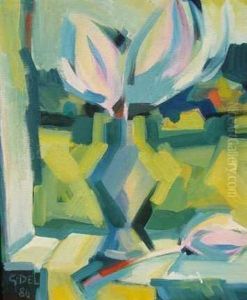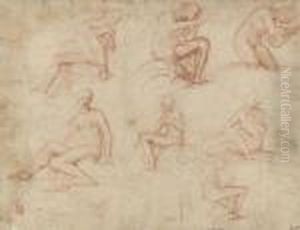Giorgio Gandini Del Grano Paintings
Giorgio Gandini Del Grano, also known as Giorgio da Parma or simply Giorgio Gandini, was an Italian painter of the Renaissance period, active mainly in Parma and its surroundings. Born around 1483, the details of his early life and training are somewhat obscure, and much of what is known about him comes from his body of work and the records of his commissions.
Giorgio Gandini Del Grano is most noted for his religious paintings, which often depict scenes from the life of Christ and the Virgin Mary. His style suggests that he may have been influenced by the works of Correggio, who was also active in the Parma area during that time. Gandini's work is characterized by its delicate coloration and graceful figures, showing a transition from the rigid and formal styles of the early Renaissance to the more fluid and dynamic approach that would define the High Renaissance.
One of his most significant works is the fresco cycle in the Oratorio di Santa Maria delle Grazie in Busseto, which he painted around 1520. These frescoes demonstrate his skill in creating narrative scenes and his ability to handle complex compositions. Another notable work is the 'Madonna with Child Enthroned', which showcases his talent for depicting tender and intimate interactions between the holy figures.
Unfortunately, Giorgio Gandini Del Grano did not leave behind a large body of work, and some of his paintings have been lost or damaged over the centuries. Despite this, he is remembered as a modest but talented artist who contributed to the rich tapestry of Renaissance art in northern Italy.
Gandini's career was cut short when he died in 1538. His works, however, continued to influence local artists in Parma and helped to establish the region's reputation as a center for artistic innovation during the Renaissance. His surviving paintings remain a testament to his artistic abilities and provide insight into the religious and cultural milieu of his time.

